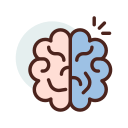Text
I'm OK-You're OK: A Practical Guide To Transactional
Here is a fresh, sensible, increasingly popular approach to the problems that every human being, including the person in need of psychiatric help, faces every day in his relations with himself and others. Transactional Analysis is a new breakthrough, one that confronts the individual with the fact that he is responsible for what happens in the future, no matter what has happened in the past. It is both a teaching and a learning device. It distinguishes three active elements in each person’s make-up: the Parent, the Adult, and the Child (P-A-C). The Parent personifies the “don’ts” and a few “do’s” implanted in one’s earliest years and automatically accepted as gospel. The Child represents spontaneous emotion. Both Parent and Child must be kept in proper relation to the Adult, whose function is that of a reality computer that grinds out decisions based on the data derived from experience. The goal of Transactional Analysis is the strengthening and emancipation of the Adult from the archaic recordings in Parent and Child to make possible freedom of choice and the creation of new options. Dr. Harris explains that there are four life positions underlying people’s behavior. They are: (1) I'M NOT OK-YOU'RE OK (the anxious dependency of the immature); (2) I'M NOT OK-YOU'RE NOT OK (the “give-up” or despair position); (3) I'M OK-YOU'RE NOT OK (the criminal position); and (4) I'M OK-YOU'RE OK (the response of the mature adult, at peace with himself and others). Most people still unconsciously operate from the I'M NOT OK- YOU'RE OK position. Dr. Harris applies the P-A-C system to problems in marriage and child rearing, mental retardation, violence, student revolt, racial prejudice, creativity, adolescence, religion, and international problems, including war. There is a long and helpful chapter discussing when treatment is necessary, with a description of group treatment. (T.A. works at its best in groups: the more transactions to analyze, the better.) The chapter “P-A-C and Moral Values” is outstanding, and the final chapter is concerned with the social implications of P-A-C—for there is a National Parent and a National Child. It can be intriguing and liberating indeed to recognize P-A-C in oneself and others.
Availability
No copy data
Detail Information
- Series Title
-
-
- Call Number
-
616.89
- Publisher
- New York : Harper & Row., 1967
- Collation
-
Hardcover, 299 hlm , 15x21.5 cm
- Language
-
English
- ISBN/ISSN
-
-
- Classification
-
616
- Content Type
-
text
- Media Type
-
-
- Carrier Type
-
-
- Edition
-
-
- Subject(s)
- Specific Detail Info
-
-
- Statement of Responsibility
-
-
Other version/related
No other version available
File Attachment
Comments
You must be logged in to post a comment

 Computer Science, Information & General Works
Computer Science, Information & General Works  Philosophy & Psychology
Philosophy & Psychology  Religion
Religion  Social Sciences
Social Sciences  Language
Language  Pure Science
Pure Science  Applied Sciences
Applied Sciences  Art & Recreation
Art & Recreation  Literature
Literature  History & Geography
History & Geography